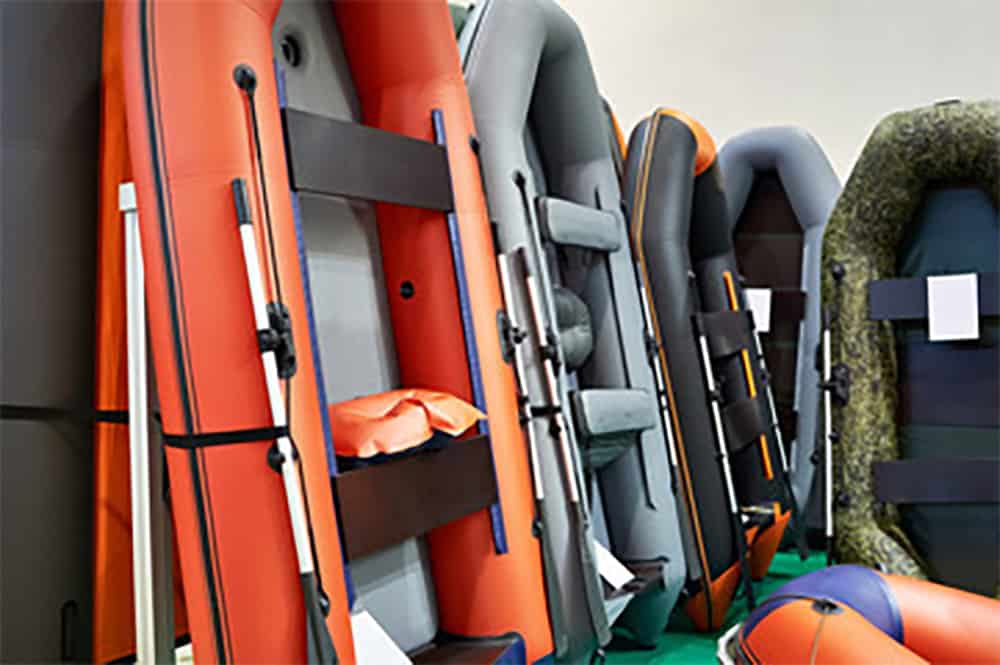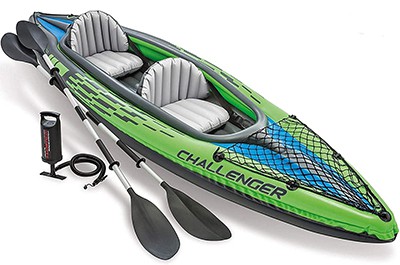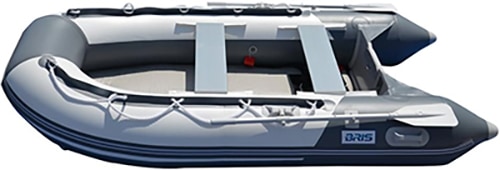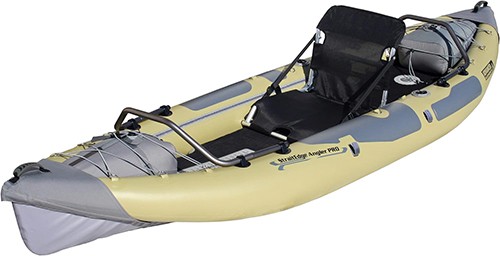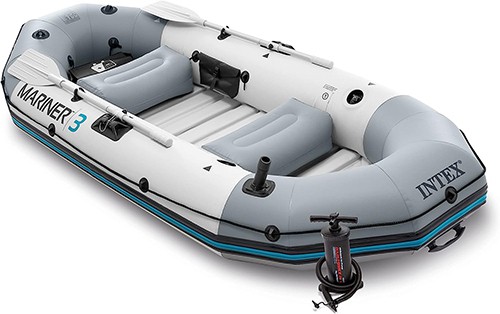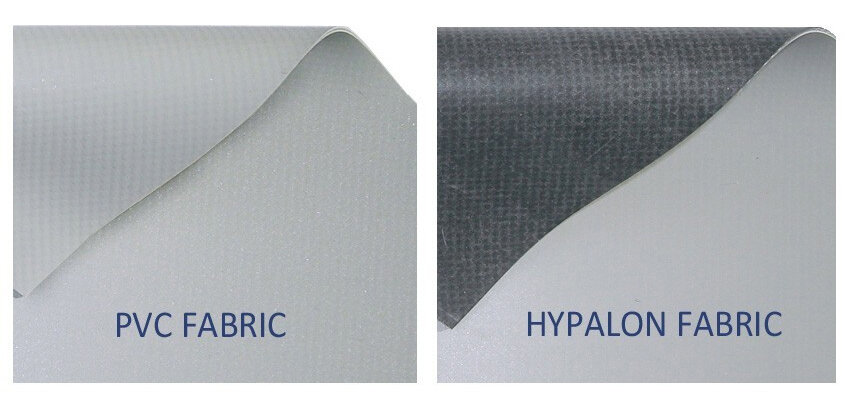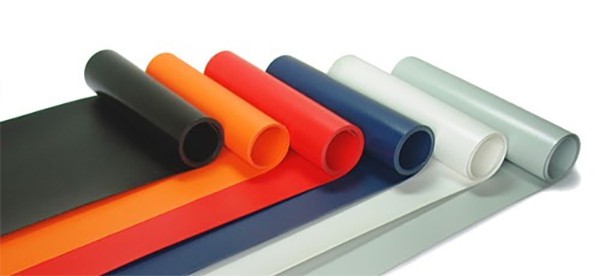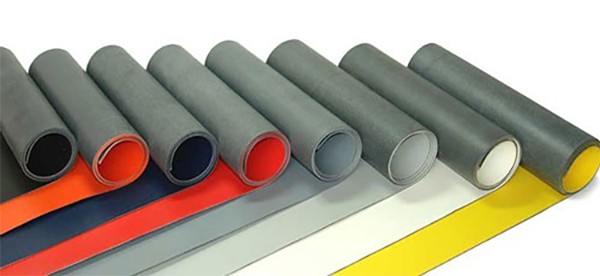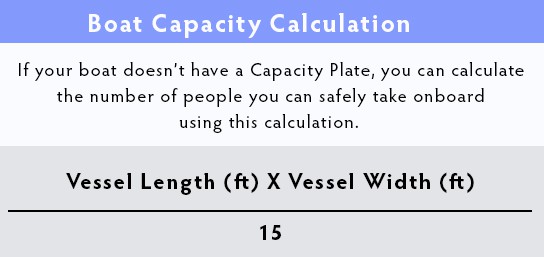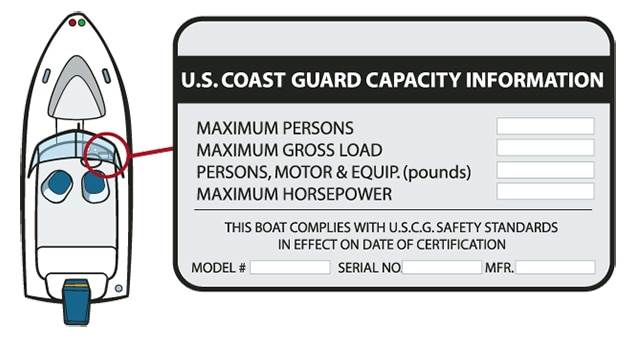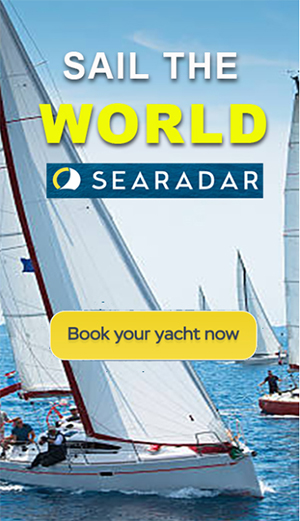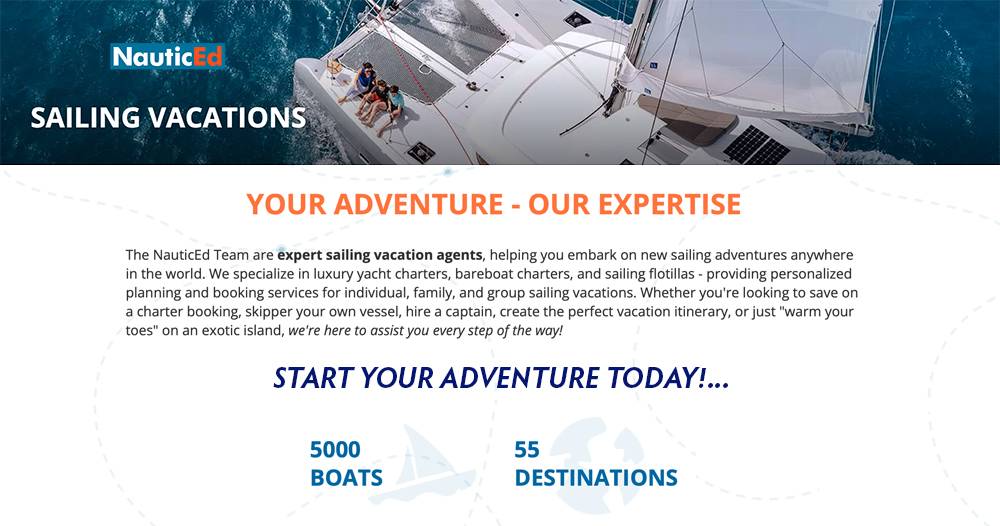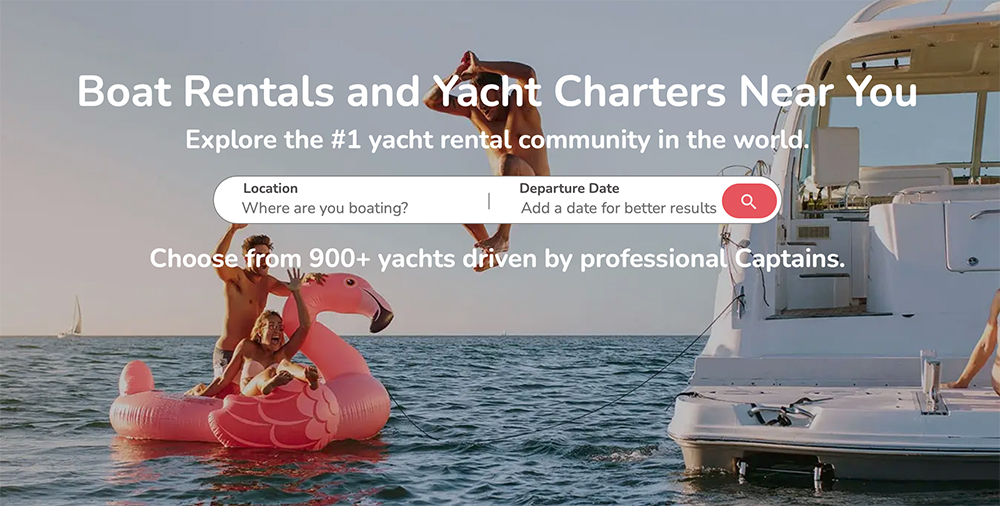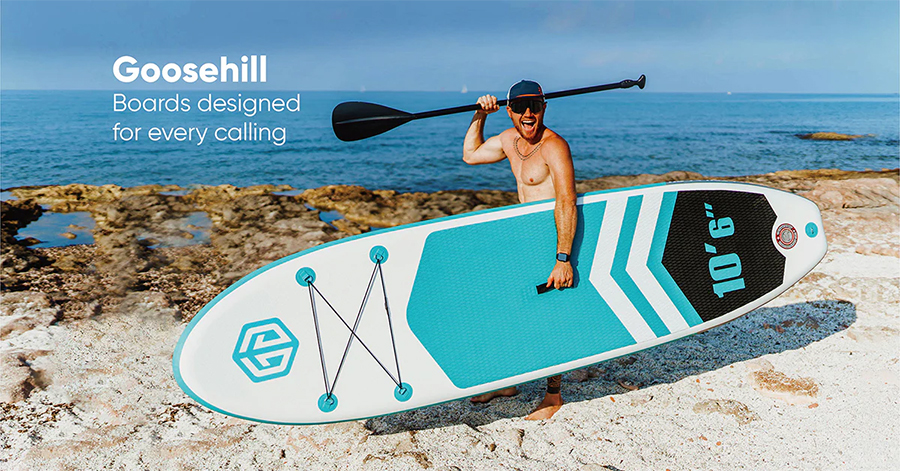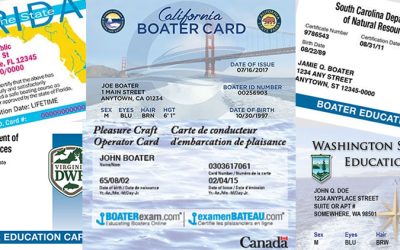What Is An Inflatable Boat?
Inflatable boats come in a variety of styles and designs, are lightweight and portable, utilizing inflatable tubes that provide buoyancy and stability. From leisurely family outings on calm lakes to adrenaline-pumping whitewater rafting excursions, inflatable boats have earned their place as a popular choice among water enthusiasts.
The primary purpose of inflatable boats is their ability to navigate various water environments with ease. Whether you’re a thrill-seeker in search of wild rapids or an angler seeking tranquility in secluded fishing spots, these remarkable vessels fit the bill.
Their buoyant nature allows them to glide smoothly over water surfaces, while their flexible construction ensures durability even in rugged conditions. So no matter what type of boating adventure you’re looking for, inflatable boats are here get you out there enjoying time on the water.
These versatile vessels are commonly constructed with buoyant tubes made of durable materials such as PVC or Hypalon. Inflatable boats come in various sizes, from compact models designed for two people, to larger ones capable of accommodating a small group or carrying heavy loads.
A Look At the Various Types of Inflatable Boats
Inflatable Kayaks
Inflatable kayaks are designed for one or more passengers, inflatable kayaks offer stability and maneuverability. They are versatile and suitable for calm rivers, lakes, and coastal waters.
Inflatable Dinghies
Inflatable Dinghies are small inflatable boats often used as tenders for larger vessels. They are lightweight, portable, and can be easily towed or stowed on boats
Inflatable Fishing Boats
Designed with features specific to anglers, inflatable fishing boats offer stability and often include accessories such as rod holders. They are suitable for reaching secluded fishing spots.
Inflatable Stand-Up Paddleboards (SUPs)
Inflatable SUPs are versatile boards used for stand-up paddling. They are compact, easy to transport, and suitable for various water conditions.
Inflatable Rafts
Inflatable rafts are larger boats suitable for multiple passengers. They often feature multiple chambers for added safety and stability.
What Are The Advantages Of Inflatable Boats vs. Traditional Boats?
Portability and Ease of Transportation
One of the key advantages of inflatable boats is their remarkable portability and ease of transportation. Unlike traditional boats, inflatable models can be effortlessly deflated and folded into a compact size for storage or transport.
Convenience is a major factor that allows boaters to explore all types of waterways without worrying about finding a large storage space or towing a heavy trailer. Additionally, different sizes of inflatable boats cater to specific weight considerations, ensuring that individuals can choose the perfect fit for their needs.
Stability On the Water
Just because inflatable boats are lightweight, it doesn’t mean they compromise on stability.
This is mostly due to the fact that they utilize buoyancy tubes that provide additional support and balance. These tubes contribute to preventing capsizing while maintaining buoyancy even in choppy waters.
Additionally, many inflatable boats feature V-shaped hulls that enhance performance by reducing drag and improving maneuverability. The combination of buoyancy tubes and V-shaped hulls creates a stable platform for various activities such as fishing, watersports, or simply enjoying a relaxing day on the water.
Modern inflatable boats are typically constructed using durable materials such as PVC (polyvinyl chloride) or Hypalon, which enhance their strength and resilience. The tube design, with multiple chambers, contributes significantly to stability.
Even if one chamber is compromised, the remaining chambers provide buoyancy, preventing catastrophic failure. High-quality inflatable boats also incorporate features like inflatable keels, which enhance stability by improving the boat’s tracking and handling in the water.
There are continual advancements in manufacturing technologies have led to the development of high-pressure inflatable floors, adding an extra layer of stability to these watercraft. These inflatable floors create a rigid surface that distributes weight evenly, reducing the risk of tipping and enhancing overall stability. This innovation is particularly beneficial for activities like stand-up fishing or diving, where a stable platform is crucial.
Extremely Versatile In Different Environments

Inflatable boats are so popular because of their remarkable versatility across various water environments. Whether you’re planning a leisurely fishing trip, an exhilarating diving expedition, or participating in rescue operations, inflatable boats can handle any environment.
Ability To Adapt To Any Water Environment
One of the standout features is their ability to adapt to different water conditions. The inflatable tubes provide excellent stability and buoyancy even in choppy waters. Thanks to their flexible structure and design, they can navigate shallow waters with ease and maneuver through tight spaces where larger boats might struggle.
Highly Suitable for Fishing, Diving, Rescue Operations, etc.
Inflatable boats are not limited by specific activities; they excel in multiple endeavors. Anglers can appreciate the convenience and stealthy approach offered by these lightweight vessels while enjoying a peaceful day on the water waiting for that perfect catch.
Divers find them ideal for transporting equipment and accessing remote diving spots comfortably. Additionally, rescue teams often rely on inflatable boats due to their quick deployment capabilities and high load capacities.
Their versatility makes them an invaluable asset in emergency situations where time is of the essence. The advantages of inflatable boats encompass portability and ease of transportation through their effortless deflating/inflation process and diverse transportation options like carrying bags or trailers.
With all these benefits combined into one remarkable vessel, I’m sure you can see why inflatable boats continue to be a “go to” choice for water adventures everywhere.
Inflatable Boat Construction and Design Explained
Materials Used To Manufacture Inflatable Boats?
When it comes to inflatable boats, the two most popular materials used are Hypalon and PVC
Hypalon, a synthetic rubber material, has long been favored for its exceptional durability and resistance to UV rays, chemicals, and extreme temperatures. It offers excellent longevity even when exposed to harsh marine environments.
On the other hand, PVC (Polyvinyl Chloride) is a more affordable alternative that also exhibits good resistance to abrasion and punctures. However, it may be less durable than Hypalon over time, especially if subjected to intense sun exposure or frequent folding.
Hypalon vs. PVC: The Pros and Cons
Hypalon has remarkable strength properties that contribute to increased overall boat durability. It can withstand continuous flexing without developing cracks or leaks—a crucial aspect for inflatable boats as they tend to experience constant stress from wave impact or weight fluctuations.
Additionally, Hypalon has the ability to resist oxidation making it highly suitable for saltwater environments where corrosion is a common concern. PVC, though not as resilient as Hypalon, presents some advantages too.
Its affordability makes inflatable boats more accessible for budget-conscious individuals without compromising on functionality. PVC also exhibits good air retention properties which can help maintain the boat’s rigidity during prolonged use.
PVC (Polyvinyl Chloride)
When it comes to inflatable boat construction, PVC is one of the most commonly used materials. It offers several advantages that make it popular among boat enthusiasts.
PVC is a versatile and widely used material that can be coated or laminated onto fabric to create inflatable boat structures. It offers good strength, abrasion resistance, and is cost-effective.
First and foremost, PVC is known for its durability and resistance to punctures, making it ideal for navigating various water conditions. Additionally, PVC boats are relatively affordable compared to other materials, which makes them accessible to a wider range of people looking for water adventures.
However, like everything else in life, PVC does have its drawbacks. One downside is that it can be susceptible to damage from prolonged exposure to UV rays and extreme temperatures.
Therefore, proper care and maintenance are crucial in prolonging the life of a PVC inflatable boat. Regularly applying UV protectants and keeping the boat properly inflated when not in use can significantly extend its lifespan.
Hypalon (Chlorosulfonated Polyethylene)
Hypalon is another material frequently used in inflatable boat construction that comes with its own set of unique properties. Hypalon boats are highly regarded for their exceptional resistance to UV rays, chemicals, and extreme temperatures.
Hypalon is a synthetic rubber-coated fabric known for its exceptional durability, UV resistance, and resistance to chemicals and extreme temperatures. It is often used in high-end inflatable boats.
This makes them an excellent choice for boaters who spend long hours under the scorching sun or need added protection against harsh marine elements. However, one aspect that potential buyers should consider is the maintenance of Hypalon boats.
While they boast impressive durability overall, repairing Hypalon can be more challenging compared to other materials due to their chemical composition. Specialized adhesive agents designed specifically for Hypalon repairs are required to ensure a secure bond during patchwork or fixing minor damages.
Additional Reinforcement Fabrics Used For Inflatable Boats
Polyurethane (PU)
Polyurethane-coated fabrics provide excellent abrasion resistance and flexibility. They are often used as an alternative to Hypalon, offering similar qualities with some variations in performance.
Neoprene
Neoprene-coated fabrics offer good resistance to oil, chemicals, and UV radiation. They are known for their flexibility and durability.
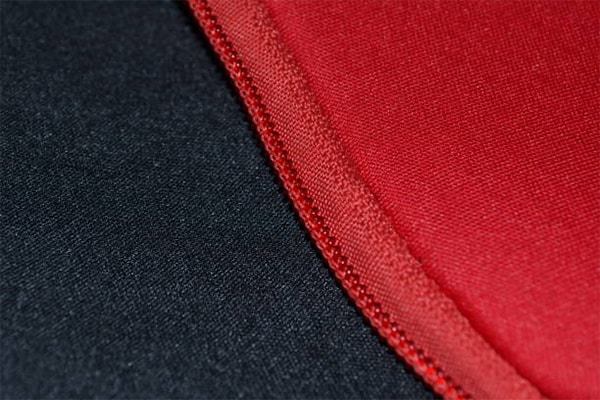
Neoprene
Neoprene-coated fabrics offer good resistance to oil, chemicals, and UV radiation. They are known for their flexibility and durability.

Nylon Fabric
Nylon is lightweight, strong, and resistant to abrasion. It is often used in the construction of inflatable boat floors and other structural components.
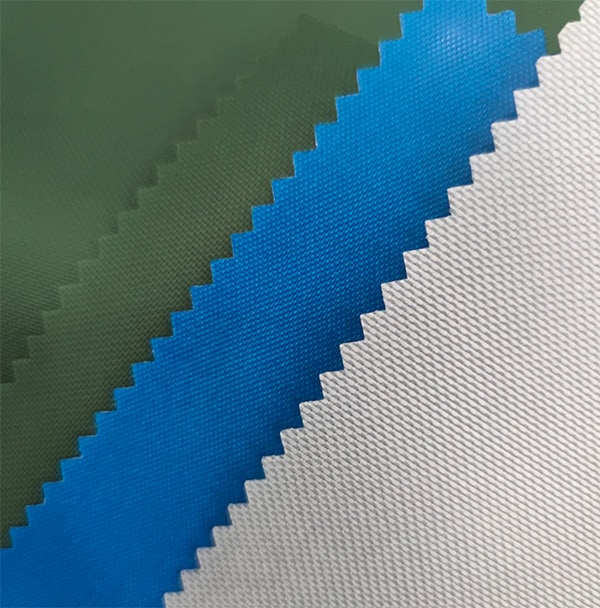
Dyneema® and Spectra
Dyneema® and Spectra® are high-strength, lightweight, and low-stretch materials. They are sometimes used as reinforcement in specific high-performance inflatable boat models
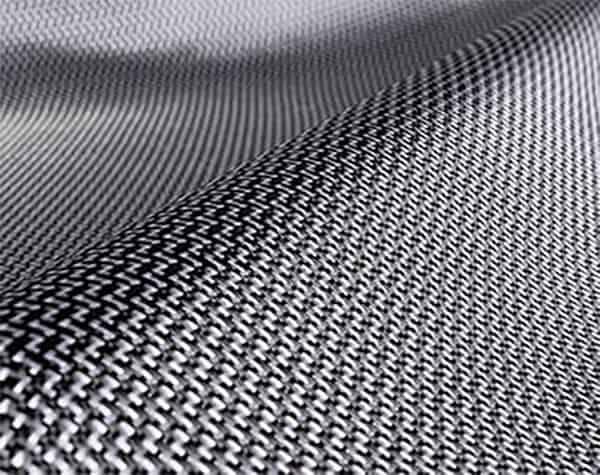
Tube Design and Shapes
The shape and design of inflatable boat tubes greatly influence its performance characteristics. The three main tube designs are round, V-shaped, and catamaran.
Round tubes offer excellent buoyancy, stability, and ease of maneuverability. They are popular in recreational boating applications and are well-suited for cruising calm waters or leisurely fishing trips.
V-shaped tubes have a sharper bottom keel, providing better tracking ability and improved performance in rougher conditions. This design allows for enhanced maneuverability even at higher speeds but sacrifices some stability compared to round tubes.
Catamaran tubes feature two parallel pontoons that enhance stability while reducing drag. This design is ideal for larger inflatable boats intended for longer excursions or commercial purposes as it delivers superior stability on calm or choppy waters alike.
Understanding Hulls Shapes and Their Significance
The hull type of an inflatable boat is a crucial factor that significantly influences its performance, stability, and suitability for various activities. Understanding the different inflatable boat hull types is essential in making an informed decision when purchasing, as it directly impacts the boat’s behavior on the water.
Flat Hulls: Inflatable boats with flat hulls are known for their stability. These boats have a wide, flat bottom that provides excellent stability in calm waters, making them suitable for activities like fishing, leisurely paddling, or cruising on lakes and slow-moving rivers.
V-Shaped Hulls: V-shaped hulls are designed for cutting through waves and choppy waters. These hulls offer better performance in rough conditions, making them ideal for coastal cruising, offshore adventures, and high-speed water sports. Inflatable RIBs often feature V-shaped hulls, providing a balance of stability and agility.
Deep-V Hulls: Similar to V-shaped hulls, deep-V hulls are designed for enhanced performance in challenging conditions. These hulls have a sharper angle, allowing for greater speed and maneuverability. Deep-V hulls are commonly found in inflatable boats used for professional and military applications, as well as in larger recreational RIBs.
Pontoon Hulls: Inflatable boats with pontoon-style hulls feature multiple air chambers running parallel to the boat’s length. This design provides exceptional buoyancy and stability, making pontoon-hulled boats suitable for activities such as fishing, diving, and carrying heavy loads.
Factors To Should Consider When Buying An Inflatable Boat
Size and Capacity
it is important to consider the size and capacity of an inflatable boat when purchasing one to ensure that it meets your needs.
The size of an inflatable boat is typically determined by its length. Inflatable boats can range in size from 8 to 18 feet long. The length of the boat will determine how many people it can comfortably accommodate. For example, an 8-foot inflatable boat can typically seat 2-3 people, while an 18-foot inflatable boat can seat 11-13 people.
In addition to the number of people, it is also important to consider the amount of gear you will need to bring on your outings. If you plan to bring a lot of gear, you will need a larger inflatable boat.
Here are some guidelines for choosing the right size inflatable boat based on the number of people and the amount of gear:
It is also important to consider the weight capacity of an inflatable boat. The weight capacity is the maximum amount of weight that the boat can safely support. This includes the weight of the people, gear, and motor. Exceeding the weight capacity of an inflatable boat can be dangerous and could cause the boat to tip over or sink.
To determine the weight capacity of an inflatable boat, you can refer to the manufacturer’s specifications. The weight capacity will typically be listed in the boat’s owner’s manual.
By considering the size and capacity of an inflatable boat, you can ensure that you choose a boat that is safe and comfortable for your needs.
Safety on your inflatable boat should always be the highest priority. With thatone of the most important things you need to know before setting out on the water is the maximum number of people and maximum amount of weight that your boat can safely handle. Not only is this an important safety concern, it’s also the law.
Federal Law mandates that all powerboats less than twenty feet in length need to carry this information in the form of a Capacity Plate.
Each Capacity Plate includes the maximum number of adult persons, the maximum gross load, and the maximum size of engine, in horsepower, that your boat can legally carry.
As you’re looking at different inflatable boats to purchase, check for its Capacity Plate; it should be permanently fastened near the steering area, or the helm.
The Importance of Safety Features On An Inflatable Boat
You’ll have many great experiences out on the water, but you also need to be safe out there.
When considering buying an inflatable boat, it is important to prioritize safety features that enhance protection and preparedness in case of emergencies. Here are some crucial safety features to look for in an inflatable boat.
Grab Handles: Sturdy grab handles strategically placed along the boat’s sides and interior provide secure points for individuals to grip during rough waters or in case of a sudden movement. They offer stability and support, minimizing the risk of falls or injuries.
Reflective Tape: Reflective tape applied to the boat’s exterior ensures visibility during low-light conditions, making it easily detectable by other vessels, preventing collisions and enhancing overall safety.
Bilge Pump: A bilge pump is an essential safety feature that removes excess water from the boat’s bilge area, preventing waterlogging and potential sinking. It’s particularly crucial for boats used in open waters or in unpredictable weather conditions.
Life Jackets: Life jackets, also known as personal flotation devices (PFDs), are mandatory safety equipment for all passengers on an inflatable boat. They provide buoyancy and support, keeping individuals afloat in case of an unexpected overboard situation.
Repair Kit: A repair kit is a valuable asset for on-the-spot fixes in case of minor punctures or leaks. It typically includes patches, glue, and tools to temporarily seal any damage until a more thorough repair can be performed.
Emergency Signaling Devices: Emergency signaling devices, such as flares, smoke signals, or distress beacons, are crucial for alerting others in case of an emergency. They can attract attention from nearby vessels or rescue personnel, ensuring prompt assistance.
Navigation Lights: Navigation lights, including a bow light, stern light, and all-around white light, are essential for safe nighttime boating.
Fire Extinguisher: A fire extinguisher is important for putting out small fires that may occur on an inflatable boat. It should be easily accessible and mounted in a safe location.
First Aid Kit: A first aid kit is essential for treating minor injuries that may occur on an inflatable boat. It should include bandages, antiseptic wipes, pain relievers, and other essential supplies.
Anchor: An anchor is used to keep your boat in one place when you are stopped. This is especially important if you are fishing or swimming
Proper Maintenance - The Key To Longevity and Optimal Performance
To ensure you have years of enjoyable boating experiences with your inflatable boat, following maintenance guidelines is crucial!
Excessive heat can lead to material deterioration or even deformation of the tubes. Also, you’ll need to periodically inspect your boat for any signs of wear and tear, such as loose seams or punctures.
Promptly repair these issues using appropriate patches or seek professional assistance if needed. By taking care of your inflatable boat, you’re investing in its longevity and ensuring countless memorable trips on the water.
Cleaning:
Rinse After Use: Always rinse the boat with fresh water after each use, especially if it has been in saltwater. This helps remove salt and other corrosive elements that can damage the boat over time.
Use Mild Soap: Clean the boat with a mild soap and water solution to remove dirt, grime, and stains. Avoid harsh chemicals that can damage the boat’s fabric.
Drying:
Thorough Drying: After cleaning, allow the boat to dry completely before storing it. Proper drying helps prevent mold and mildew growth, which can occur in damp conditions.
Storage:
Deflation for Long-Term Storage: If storing the boat for an extended period, deflate it partially to relieve pressure on seams and valves. Store it in a cool, dry place away from direct sunlight.
Inspecting for Damage:
Check Seams and Valves: Regularly inspect seams, valves, and any glued areas for signs of wear, damage, or leaks. Repair any issues promptly using a proper repair kit or adhesive recommended by the boat’s manufacturer.
Inspect Floorboards: If the inflatable boat has a rigid floor, check for any damage or warping. Ensure that the floorboards are securely in place.
Inflation Pressure:
Follow Manufacturer’s Guidelines: Always inflate the boat to the recommended pressure specified by the manufacturer. Overinflation can strain seams, while underinflation can affect performance and stability.
UV Protection:
Use UV Protectant: Apply a UV protectant specifically designed for inflatable boats to guard against sun damage. UV rays can weaken the fabric over time, leading to premature deterioration.
Avoid Sharp Objects:
Be Mindful of Sharp Objects: When using the boat, be cautious of sharp objects that could puncture the fabric. Inspect the surrounding area for potential hazards before launching.
Proper Transportation:
Secure for Transport: When transporting the boat, ensure it is properly secured to avoid abrasion or damage during transit. Use padded supports and secure straps.
Repair Kit:
Carry a Repair Kit: Keep a repair kit on board for quick fixes in case of minor punctures or leaks. Familiarize yourself with the repair process outlined in the boat’s manual.
Which Is The Best Inflatable Fishing Boat For You?
As you can see, there are so many factors to consider when buying an inflatable boat. This is certainly not a “one size fits all” scenario. Remember, you’re goal is to buy the best inflatable boat that is going to meet your needs and give you many enjoyable experiences out on the water.
You can also check out the 9 best inflatable fishing boats for that exciting fishing adventure.
Carefully considering all factors when buying an inflatable boat is crucial for ensuring a safe, enjoyable, and rewarding boating experience. Factors such as size, capacity, hull type, portability, materials, safety features, and accessories should be thoroughly evaluated to make an informed decision that aligns with your specific needs and preferences.
Here’s to your next great adventure on the water!
Check Out Related Posts
Spring Break 2024: Top Spring Break Boat Charter Destinations
Spring break boat charters offer a refreshing twist on the traditional spring break experience, providing an escape from the crowds and chaos often associated with this time of year. While the typical image of spring break may evoke scenes of crowded beaches and rowdy...
9 Best Boating Lakes in Florida: The Complete Guide To Fun In The Sun
Welcome to Florida, where the sun dances on the water and adventure awaits around every bend of its countless lakes. In this aquatic paradise, boating enthusiasts find themselves spoiled for choice, with an array of the best boating lakes in Florida offering endless...
How To Get A Boating License In 2024 - (U.S And Canada)
Having a boating license is of utmost importance for anyone who wishes to operate a watercraft, regardless of its size or type. Whether you are planning to navigate a pontoon boat, jet ski, sailboat, or any motorized vessel, understanding the significance of obtaining...
